It’s not all bad.
At times during Indiana Jones and the Dial of Destiny one may tune halfway out, go with the flow, and find oneself thinking, “Could be worse; could be aliens.” And when the ending comes, one might even think, however briefly, that this movie will prove daring and/or thought-provoking. It doesn’t and isn’t. To put it nicely, they don’t stick the landing. They don’t really stick anything. This movie is unstuck in time. And purpose. And joy.
I’d say it’s a curiously joyless movie, given the goofy antics of the three that precede it, and the genuine humor of the original. Gone is the cartoony feel (aside from CGI Indy’s cartoon face), and gone is any humor at all. I dimly recall an attempt at a gag or two, but nothing funny. Or memorable. Mostly it’s a grim journey spent with unpleasant people, with a few whiz-bang chases to keep one distracted from the callow emptiness at its heart.
It’s a movie very much in keeping with the times. With the times, and with its new Disney ownership. It’s built in much the same way as The Force Awakens, with the same cynicism, the same pointlessness, the same tearing down of whatever it was we once liked about its dashing, all too human hero. It’s said they went with James Mangold as the director because Harrison Ford enjoyed working with him on prior movies. But it’s hard to believe Mangold wasn’t picked by Disney for what he did with Logan, the “serious” comic book flick in which X-Man Wolverine is old and tired and very, very grumpy.
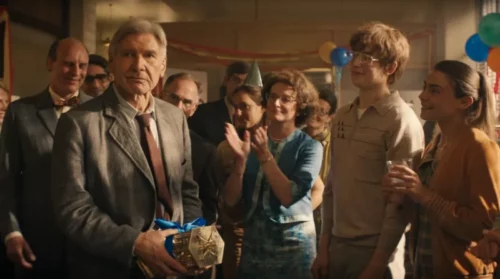
We meet Indy as a grumpy old man yelling at those damn kids to turn their rockity-roll music down. It’s an okay gag—ha ha, Indy’s just another crusty old-timer! Only then they keep digging. He’s become the world’s most boring professor—none of his students cares at all about archaeology. But no matter, it’s his last day, he’s retiring. Also, he’s divorced from Marion, and their son, Mutt, oh so briefly met in Crystal Skull, is dead. Like the recent Star Wars “trilogy,” we begin by erasing what happened in the last movie, and starting over.
Into the picture leaps Indy’s god-daughter, Helena (Phoebe Waller-Bridge), a terrible person who cares for nothing but money, and is some kind of high priestess in the secretive, underground antiquities market, where she sells her finds. Maybe this choice struck Mangold—and the three other credited writers— as bold? It’s curious why they’d think anyone would want to see an empty, soulless liar snarking it up in Indy’s face for the whole movie. Toward the end she evinces growing concern for his fate, yet at no time is there any sort of character reckoning for her. It’s as though, by spending the movie with her, we’re supposed to forget she’s an asshole.
(And… plenty more SPOILERS to follow, should that concern you)
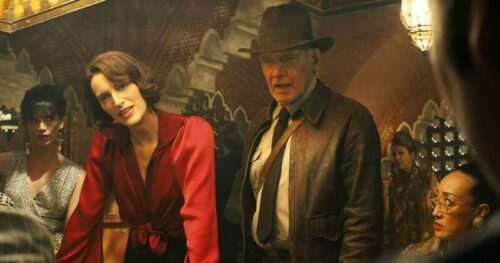
Then we reach the end, where the time-doohickey sends them back to 212 BC, and the Siege of Syracuse, in Italy. Word on the street has it that some audiences think this is too outrageously dumb on the face of it. Others, not so much. Works for me, it’s kinda sorty science-y, and not half as dumb as a 700-year-old knight hanging out in a cave lit by immortal flames. Best of all, I thought, “Holy hell, this is actually pretty bold, Indy is stripped of every connection back home, any reason for being in his own time, then finds himself in his dream period of history, where he can spend his last days in conversation with Archimedes (assuming infection from his bullet wound doesn’t kill him).” And then—and then!—Indy will die, and, thus, be buried among what to us—and to him!—is archaeological history. And this is where, in an archaeological sense, he would find immortality. It’s just like Belloq told Indy in Raiders, holding up a crappy pocket-watch:
“Look at this. It’s worthless. Ten dollars from a vendor in the street. But I take it, I bury it in the sand for a thousand years, it becomes priceless.”
Instead of that—instead of anything—Helena abruptly gets a bug up her ass about the need for Indy to be in his own time, yells at him, punches him in the face, and brings him back to the present of ’69. What the hell kind of monster is she? Why is she in this movie? Why didn’t she give Indy the final days he wanted? So he could reunite with Marion?
Right. So he could reunite with Marion. Who isn’t in the movie save this last scene. What’s she doing here? Why is she getting back together with him? Because he went on some wacky adventure? Because he looks sad and helpless having been shot? Nothing in the preceding story has a damn thing to do with Indy’s failed marriage. How did she even know to show up? Did Helena have a vibe about how this would work out, and then she called up Marion and asked nice, and now she and Indy are going to grow old together? If that’s the end they wanted—and why not? What else would we expect?—then what we’d need is a movie telling that story. In some way. In any way. This is not that movie.
Dial of Destiny isn’t about anything. Evil stealth-Nazi Voller (Mads Mikkelsen) wants Archimedes’s magic trinket in order to go back in time to ’39, there to kill Hitler and go on to win a war for the Germans, for once. But the trinket only goes to 212 BC. Voller’s screwed—oh, and now he’s dead, too. Does Indy do anything in Italy? Does he have any reason to be here? No. None. He might have stayed there. Might have wanted to learn something. Might have experienced the core emotional moment some other movie would have spent the past two hours building toward. Instead he says howdy to Archimedes, and then his insufferably selfish sidekick knocks him out and drags him home.
Prior to that, Indy’s goal is to prevent Voller from… from… killing Hitler? Nobody kills Hitler on my watch, pal!
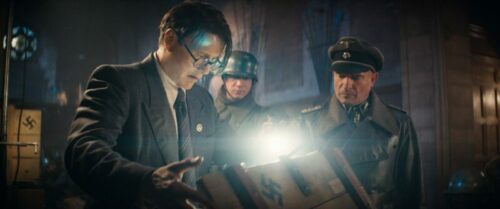
Granted, messing thus with history in some time-travelish way might prove troublesome. Like, for instance, in the same way crashing your plane in 212 BC and giving Archimedes a wristwatch might.
The opening, back in ’45 with the Nazis, isn’t bad. Aside from fake young Indy’s creepy rubbery CGI face, out of which comes an 80-year-old’s voice. And that it’s over 20 minutes long. The whole movie feels needlessly stretched out. Most of the running time has Indy and Helena chasing after the trinket that tells them where the other trinket is, and every time they get anywhere, the Nazis arrive just in time to make trouble. Took me awhile, I admit, before realizing that’s all the movie would be. A long, meaningless chase until at last we get to see the gizmo in action.
Why isn’t Short Round in this movie? By the way. That’s the real question we should be asking. Why isn’t he the new sidekick? Surely he’s grown up to be an archeologist, inspired by his youthful adventure thwarting the curse of Kali. The opening of this movie could have had a figure dressed in hat and leather jacket, whip in hand, making a weird and thrilling discovery, only to reveal that it’s not Indy, it’s Short Round. I’m telling you, it would have killed!
And why is Indy played as a loser? The only answer is that that’s how we play old heroes these days. If they’re old, they have no place in the world. The world has passed them by! An old hero, a relic, unable to adapt to today’s cynicism! But Indy was never a superhero, never a victim of a government using them for a “good” they defined, never a fighter in the black-and-white battle against evil. He was a book-smart, wise-cracking, quick-thinking, good-in-a-fight archaeologist out to preserve history. Why, in his old age, couldn’t he be inspiring to his students? An amazing story-teller with an endless troves of adventures to recount? The one professor still excited about his subject? His sudents adored him in the old days. Why couldn’t he have something of value left to impart in this movie? Instead of being a washed-up drunk?
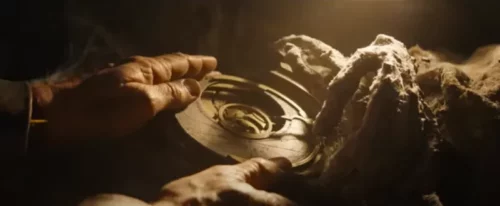
Having this week watched this whole series back-to-back, I’d say the root problem is that, since Raiders, no one has known what an Indy story should be. Raiders is a brilliant piece of escapist entertainment, but it’s not about anything. A man learns that there’s more out there than he imagined? Nazis are bad? The U.S. government is too? Snakes are scary? There’s no theme, no greater meaning, no deeper exploration of character. So when it came to the sequels, there wasn’t anything to continue. Other than to send Indy on another adventure. Which could be any adventure at all. Which could have any meaning at all—or none. The stories of how these movies were made each contain years of discarded scripts, ideas, pitches. Not a single movie in the series suggests in its story where a future story should—or could—go. From Raiders on, there was no sense of urgency, no need to “finish” the story, no closure to be gained. Every sequel was predicated on the idea that it would be fun to see Indy do, just, something else. But what else? And who is this guy, really? Beats me. Who’s got an idea? Let’s bat around story notes for, oh, ten, fifteen years at a time, see what we come up with.
The kindest thing one could say of Dial of Destiny is that it’s more or less serviceable. It gets a job done. It’s not a trainwreck. It’s just… a 2023 action flick. Grim, darkly lit, featuring one of those old characters who’s now a sidekick in his own movie to the wise-crackin’ hipster kid with a heart. It’s nothing anyone needed, and by its box-office thus far, nothing anyone much wanted. It’s a movie that plays it tiresomely safe until the end, where for a brief few minutes it threatens to dream big, only to yank us right back to the predictably banal.
I’m glad this series is over (knocks on wood). I’ll always love Raiders. And I’ve come to love, for all its goofy faults, Temple of Doom too. As for the other three—Adios, amigo.
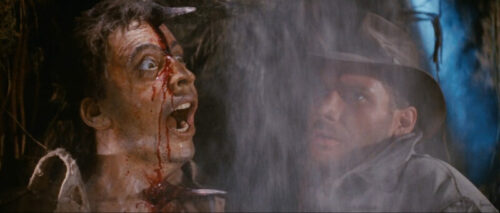

I suppose I’ll watch it someday.
At least it doesn’t have Shia LeBeouf taking up the mantle and foisting a new series on us starring him.